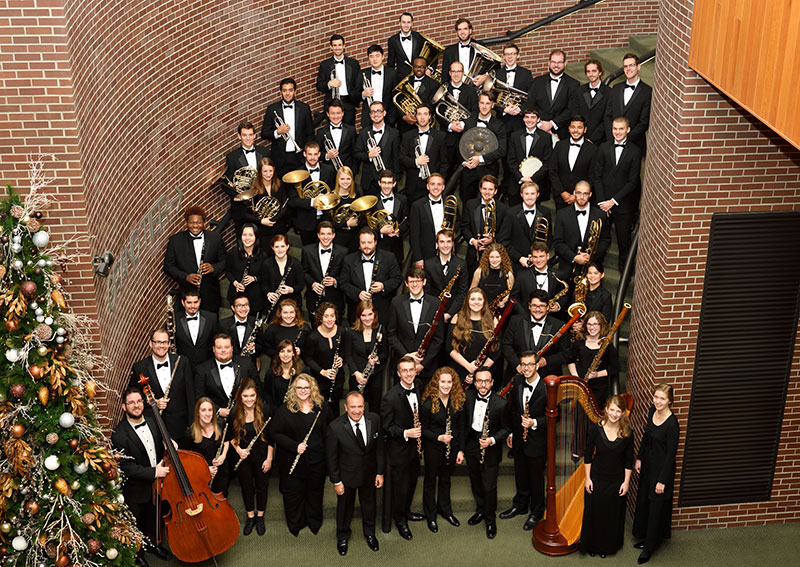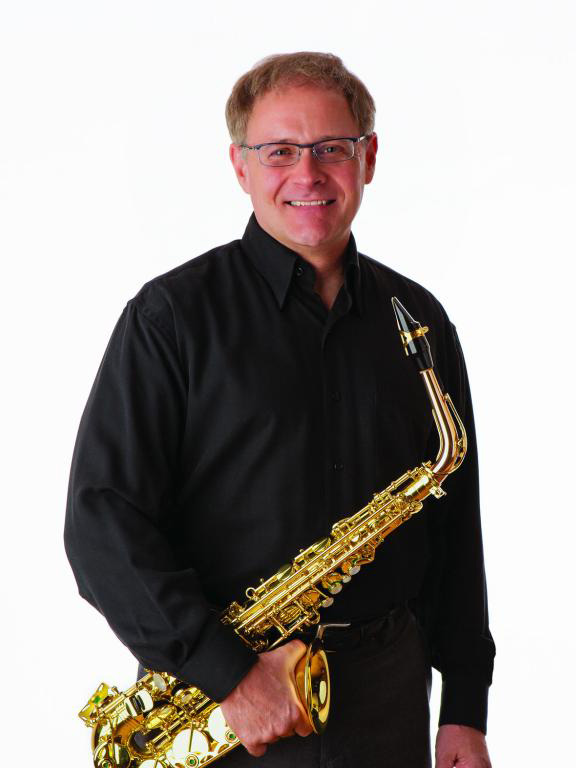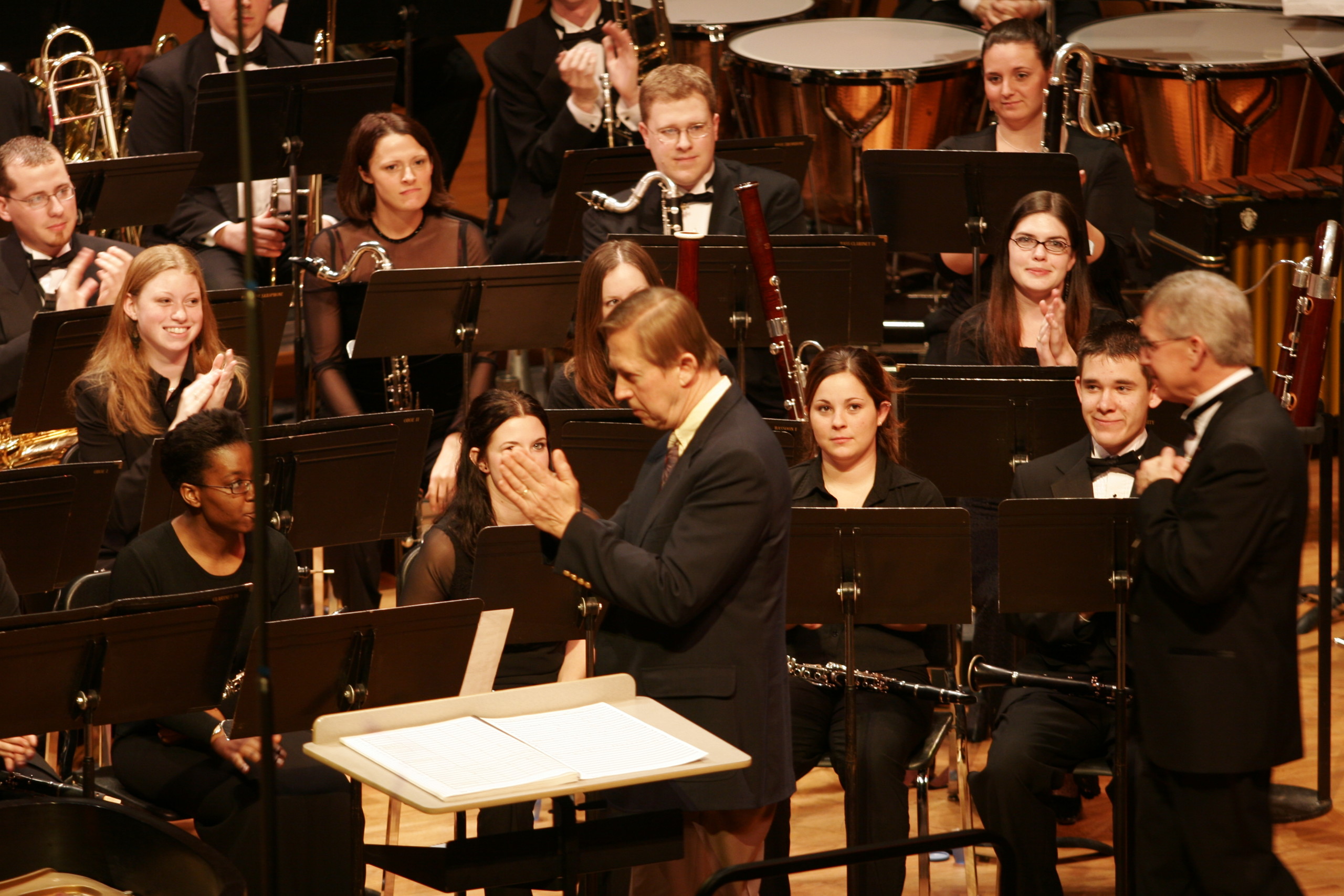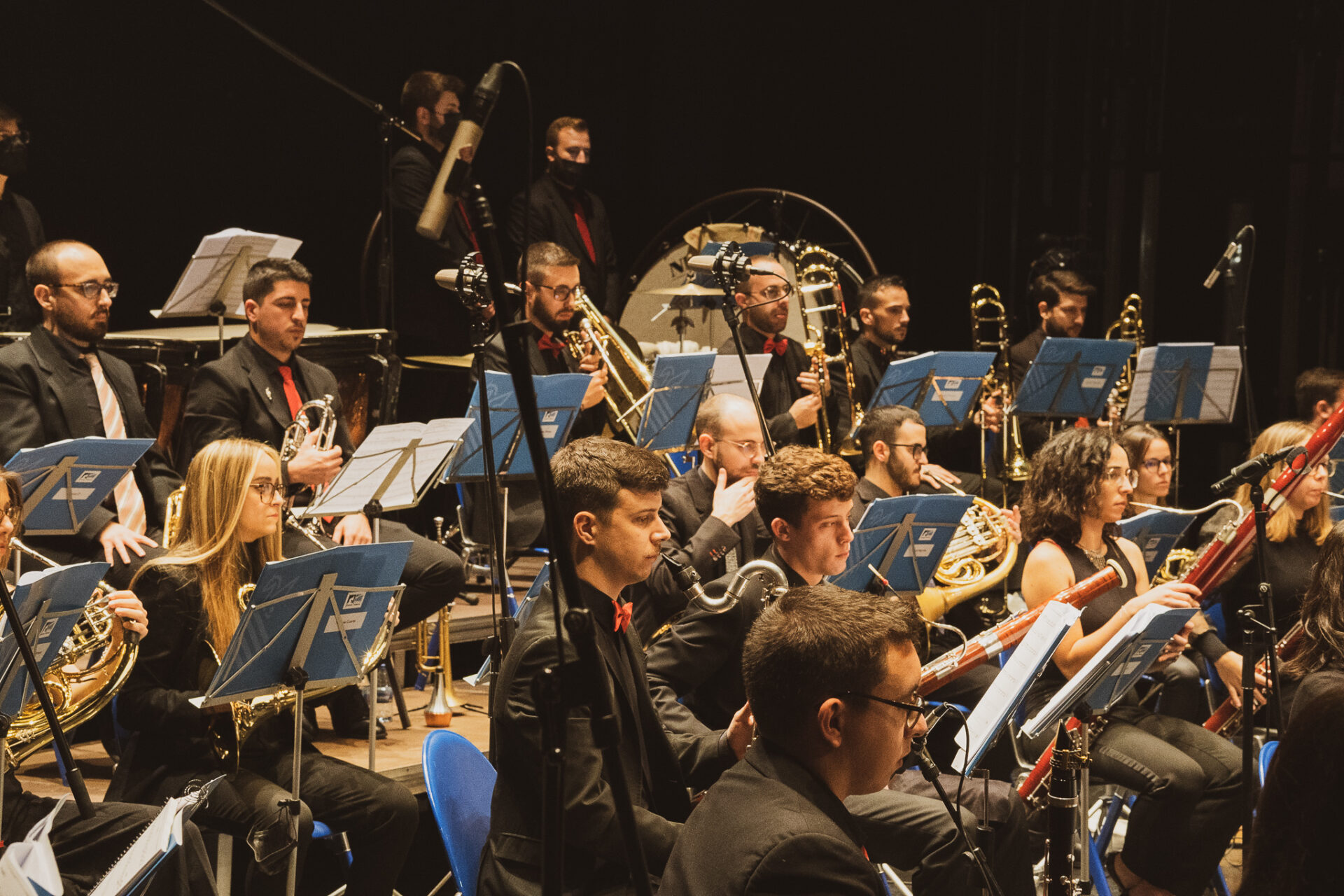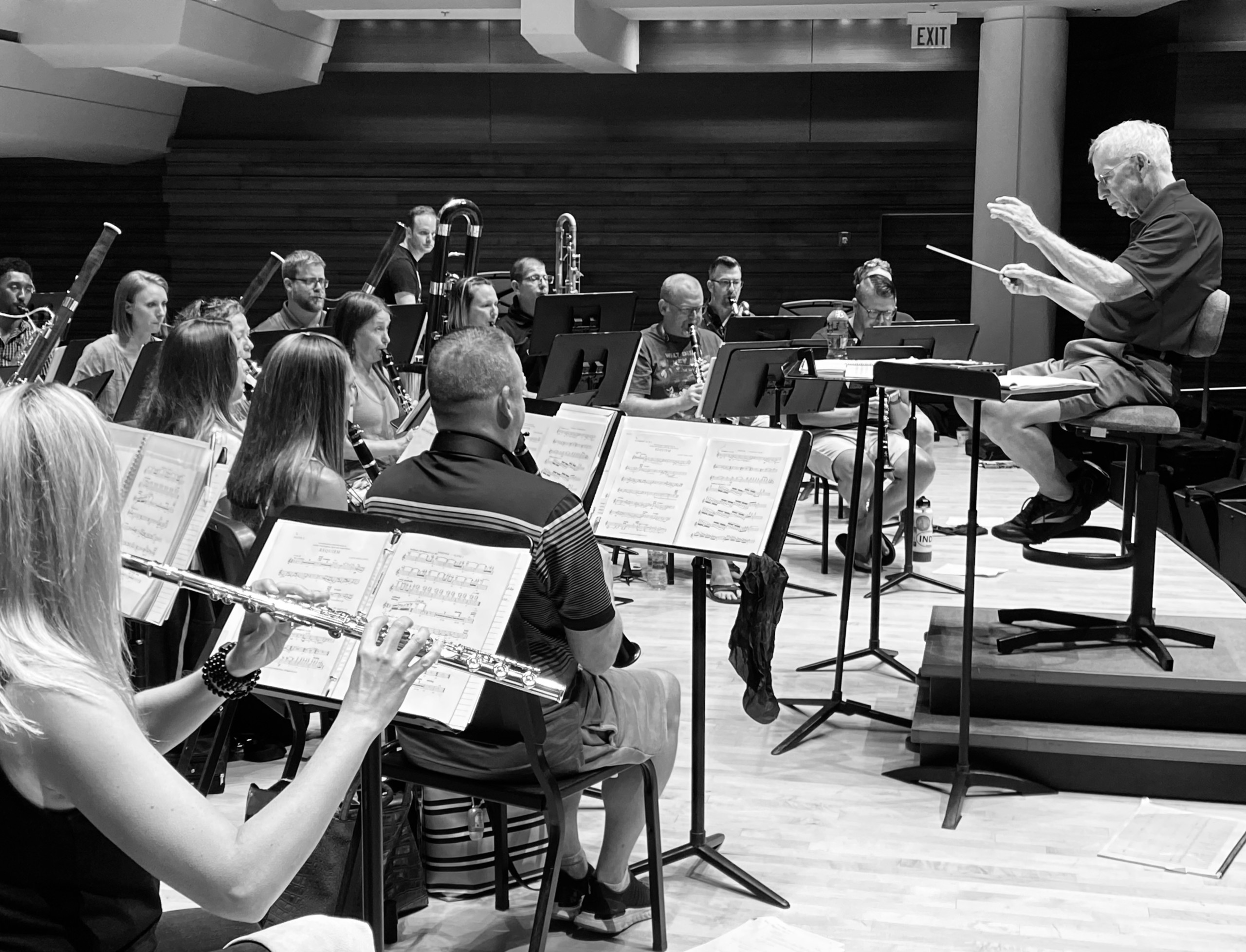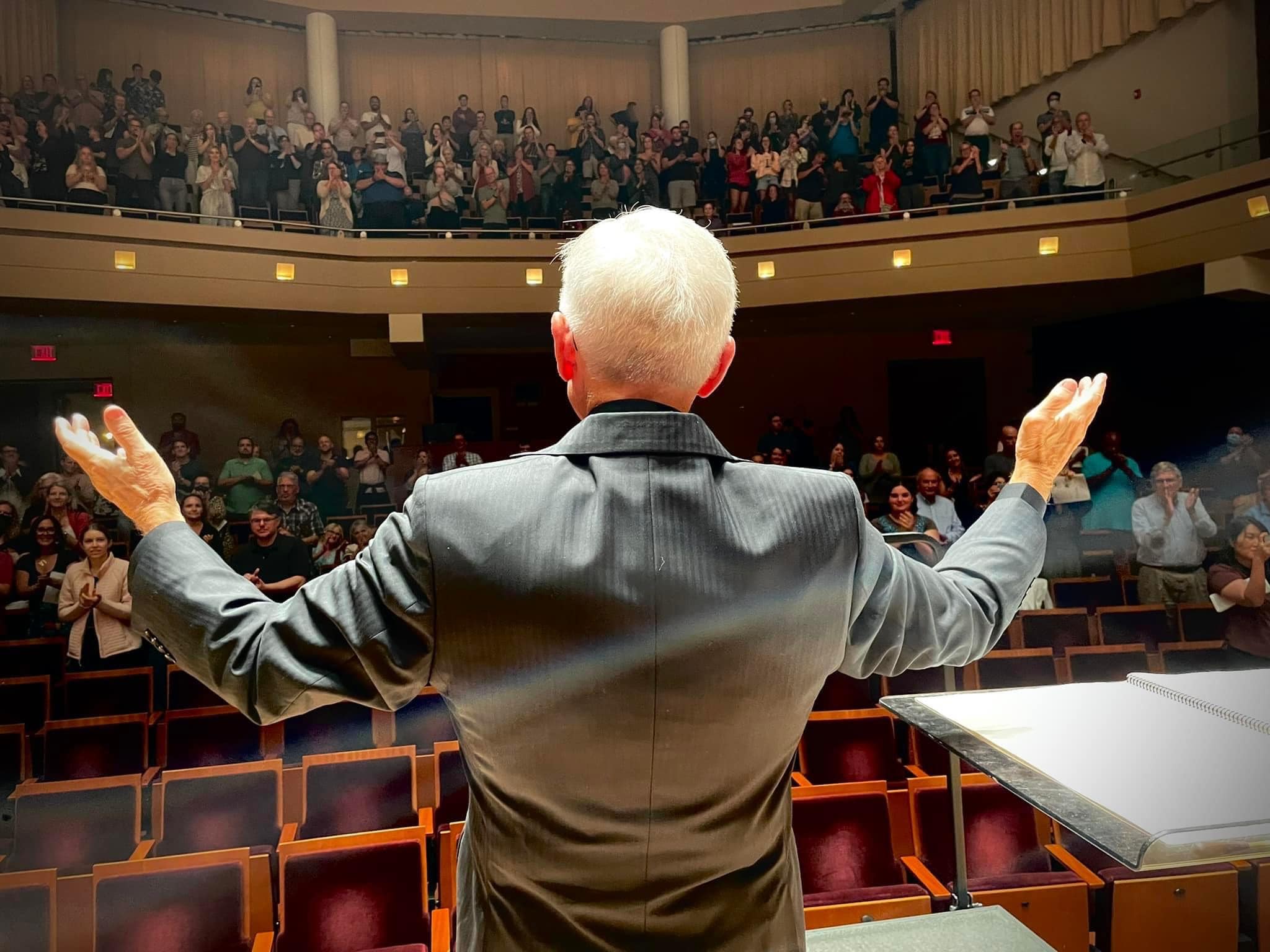Maslanka Weekly highlights excellent performances of David Maslanka’s music from around the web.
It was from 1965 through 1971 that David Maslanka obtained his Ph.D. and Master of Music degrees from Michigan State University. Studying composition with H. Owen Reed, it was at Michigan State that David learned and perfected the fundamentals of writing for wind instruments and the wind ensemble. Later in life when David was firmly established as one of the foremost composers of wind band music in the world, his Alma Mater often featured his compositions in concerts and recitals on campus. Happily, this tradition continues today in East Lansing and a new generation of students are discovering and learning David’s music.
This week, we feature various ensembles from Michigan State University playing recent performances of David’s music: Symphony No. 5, Hymn for World Peace, and Symphony No. 8.
Symphony No. 5
From David’s Program Note:
In 1975 I had the idea to compose a Mass using the texts of the Latin Ordinary. It took nearly 20 years of personal and musical development to feel ready to do this, and the Mass was composed in 1994-95. I am not a Catholic, nor even a practicing Christian, yet the Mass text was like a beacon, forecasting a long working-out process that would allow me to be clear enough to actually write the piece. From my current perspective it appears that much of my work prior to 1994 was a prelude to the Mass, and the pieces since, largely a reflection on the Mass.
Symphony No. 5 is no exception. It has been composed around three well-known Chorale melodies: “Durch Adams Fall” (Through Adam’s Fall) in the first movement, “O Lamm Gottes, Unshuldig” (O Lamb of God, Without Blame) in the second, and “Christ Lag in Todesbanden” (Christ Lay in the Bonds of Death) in the third and fourth. The third is a meditation on the theme of “Christ entombed”, and the fourth is a full-blown fantasia on the “Christ Lag” melody. Much of the music of this Symphony is urgent and insistent. Have used the words “aggravated”, “angry”, and “overwhelming” by way of description. But for all its blunt and assertive force, the Symphony is not tragic. It is filled with a bright and hopeful energy. The music does not try to illustrate the story of the Mass, but rather continually speaks to the theme of transformation – the transformation of tears into power, and the victory of life over death.
Watch as Kevin Sedatole leads the Michigan State University Wind Symphony in an exciting performance of the entire symphony.
Hymn for World Peace
From David’s Program Note:
The title, “Hymn for World Peace” came from the simple thought that if we want world peace, we can begin as individuals to ask for it. Music making opens hearts and creates peace in individuals and communities. This is a powerful step as musicians that we can take.
Watch as David Thornton leads the Michigan State University Symphony Band in a powerful performance of this work.
Symphony No. 8 – I. Moderate, Very Fast
From David’s Program Note:
Symphony No. 8 is in three distinct movements, bur the musical layout suggests a single large-scale panoramic vista.
I began the composition process for this symphony with meditation, and was shown scenes of widespread devastation. But this music is not about the surface of our world problems. It is a response to a much deeper vital creative flow which is forcefully at work, and which will carry us through our age of crisis. This music is a celebration of life. It is about new life, continuity from the past to the future, great hope, great faith, joy, ecstatic vision, and fierce determination.
The old is continually present in the new. The first movement touches the “Gloria” from my Mass: “Glory to God in the highest,” whatever that may mean to you: the power of the universe made manifest to us and through us.
The second movement is a large fantasia on the old Lutheran chorale melody Jesu meine Freude (Jesus My Joy). The life of Christ is one powerful image of the high creative: being willing to be broken to receive the new; giving oneself up entirely so that a new idea can be born. The old form of the organ chorale prelude underlies this movement – new language out of the old.
The third movement is a music of praise and gratitude for all that is. It can be traced to the very end of the favorite old hymn tune All Creatures of Our God and King – the part with the joyous descending major scale where all the bells ring out. I recently used this tune for a set of variations in a piece called Unending Stream of Life, a name which could also be a fitting subtitle for this new symphony.
Watch as guest conductor Gary Green leads the Michigan State University Wind Symphony in a thrilling performance of the first movement.
More info
- Kevin Sedatole
- David Thornton
- Michigan State University Bands
- Gary Green
- Symphony No. 5 @ davidmaslanka.com
- Hymn for World Peace @ davidmaslanka.com
- Symphony No. 8 @ davidmaslanka.com
We would love to hear from you! If you know of any outstanding performances of David Maslanka’s music on the web, please email us at maslankaweekly@maslanka.org.
